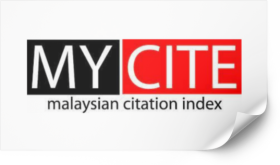Feasibility Study of Methylene Blue Adsorption Using Magnetized Papaya Seeds
Keywords:
Adsorption, Methylene Blue, Magnetized Papaya Seeds, Isotherm ModelsAbstract
Adsorption is widely used in wastewater treatment due to its ease of operation and relatively low operational cost. Wastes from agricultural or food industrial sector have been idealized as a sustainable solution in the synthesis of adsorbent for this purpose. Magnetized adsorbents are gradually gaining attention since the hassle of further purification following the adsorption process can be avoided compared to the conventional adsorbents. In the present study, the potential of magnetized papaya seeds (MPS) to adsorb dye is investigated as a replacement to other adsorbents. The removal of methylene blue (MB) from aqueous solution using MPS was conducted. It was found that 80.47 % removal of MB could be achieved by MPS. The adsorption performance of MPS was further investigated under the effects of different parameters, which were pH of solution (2 – 12), adsorption temperature (25?C – 65?C), adsorbent dosage (0.25g – 1.25g), MB initial concentration (10mg/L – 50mg/L) and contact time (30min – 180min). In terms of the adsorption isotherm, a comparison between the Langmuir, Freundlich and Temkin models was performed and the results revealed that the adsorption of MB onto MPS obeyed Langmuir adsorption isotherm model with the highest regression coefficient value (R2= 0.9983). With such exploratory approach, the findings in this research are beneficial to suggest MPS as an inexpensive adsorbent that is effective for MB dye removal in a more realistic adsorption system.
Downloads
Published
How to Cite
Issue
Section
License
Copyright (c) 2020 Progress in Energy and Environment

This work is licensed under a Creative Commons Attribution-NonCommercial 4.0 International License.








